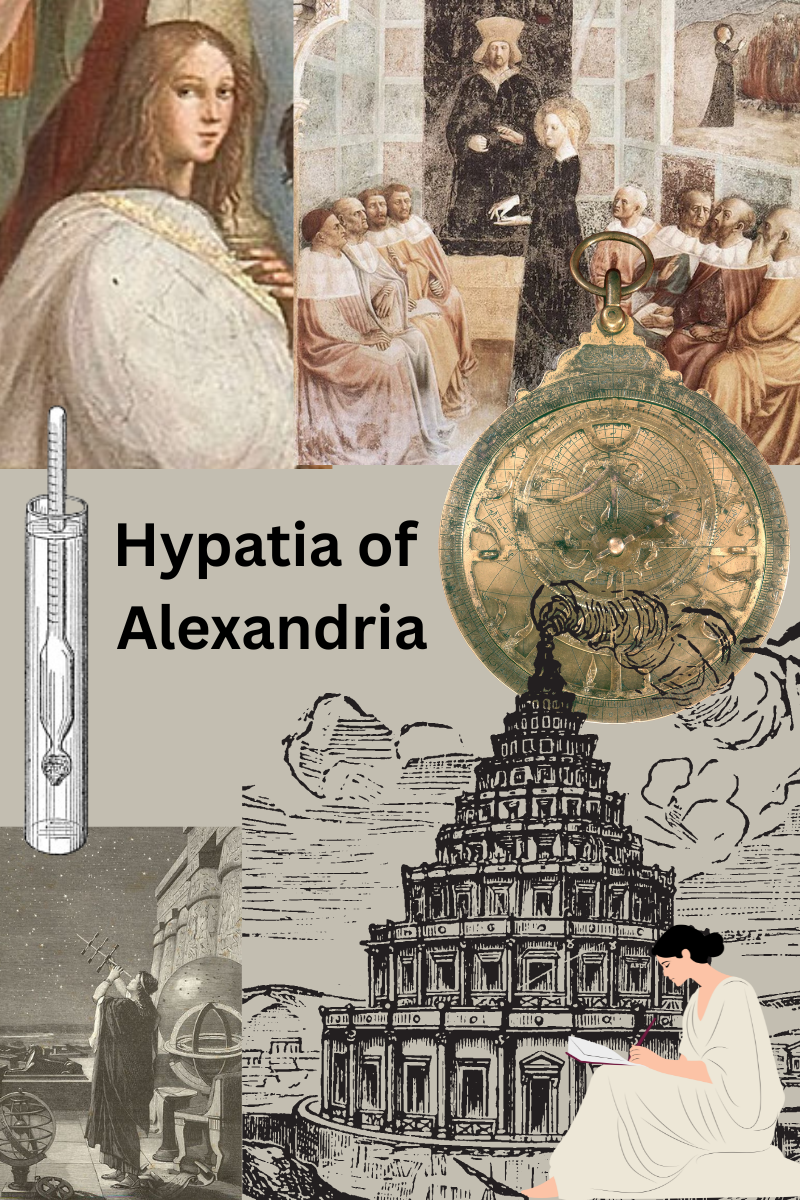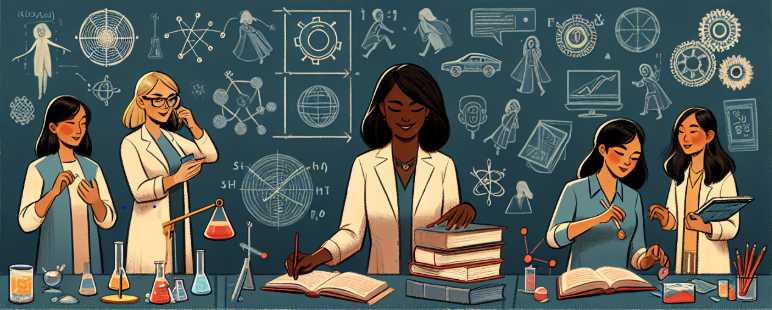Women in STEM - Hypatia
The First Women of Mathematics, Philosophy and Astronomy

When we think of Women in STEM, we often think of the modern pioneers: Ada Lovelace, Grace Hopper, Marie Curie. But long before the rise of modern science, and even before Hypatia of Alexandria, there was Pandrosion, lesser-known but a historically significant woman who taught mathematics in Alexandria during the 4th century CE, a generation before Hypatia, it is suggested.
In this instalment of our Women in STEM series, we’re turning the clock back over 1,600 years to explore the life, legacy, and remarkable mind of Hypatia of Alexandria, a mathematician, astronomer, philosopher, and teacher whose impact echoes through time. Hypatia lived in Alexandria, Egypt, during the 4th and early 5th century CE.
A Personal Discovery
We recently came across Hypatia’s story while browsing books in a local bookstore. Our son who is 9, picked up a book on Women in STEM, filled with profiles of remarkable women throughout history. He has added this to his to buy list. As we flipped through some of the pages, we found a chronological list of trailblazing women, and Hypatia featured.
It sparked chatter between us about how far back women’s contributions to science really go. He’s always keen to help me with research for this series, which makes this blog all the more special.
Who Was Hypatia?
Hypatia was a mathematician, astronomer, philosopher, and teacher during a time of great cultural and religious transformation. She is widely considered to be the first known and well documented female mathematician in recorded history. Born around 360 CE, she was the daughter of Theon of Alexandria, a respected scholar and mathematician who ensured his daughter received a full education, this was remarkably rare for women of the time.
Unlike most women of her era, who were expected to remain in domestic life, it is said that Hypatia attended the great Alexandrian Museum with her father a renowned centre of learning that housed the famous Library of Alexandria. Where, she was exposed to mathematics, astronomy, philosophy, and the classical works of ancient Greek thinkers. She absorbed this knowledge, built on it, and added to it, becoming a leading intellectual figure in her own right.
She went on to teach and lead at the Neoplatonist school of philosophy in Alexandria. Her lectures attracted students from across the Mediterranean world, and she became an influential public figure, widely respected for her intellect and eloquence.
⸻
What Did Hypatia Do?
Although much of Hypatia’s original work has sadly been lost, historical references and letters from her students give us glimpses into her influence. Apart from teaching, she actively worked on preserving, clarifying, and improving the scientific and mathematical texts of the ancient world.
Collaborating with Her Father - Euclid’s Elements
Hypatia worked closely with her father Theon, and it’s believed she contributed significantly to his edition of Euclid’s Elements, this is one of the most important mathematical texts in history. Theon’s version became the standard reference for centuries, and many scholars believe that Hypatia’s influence helped refine its structure and readability, ensuring it could be studied by future generations.
Apollonius of Perga - Master of Conic Sections
She also edited and commented on the work of Apollonius of Perga, a 3rd-century BCE mathematician known for his work on conic sections - curves like ellipses, parabolas, and hyperbolas that would later become vital in astronomy and physics. Hypatia’s contributions helped preserve and disseminate this advanced geometry, bridging the gap between ancient Greek thought and the scholars of the later Islamic and European scientific traditions.
Commentary on Diophantus
Hypatia is known to have written a commentary on Arithmetica, a collection of algebraic problems by Diophantus, who is referred to as the “father of algebra” by some. While her original manuscript is lost, references to it in letters from her student Synesius show it was read and respected. By interpreting and expanding on Diophantus’ challenging work, Hypatia played a key role in advancing early algebraic thinking.
The Astrolabe - Mapping the Sky
Hypatia worked beyond ancient texts, she applied mathematical knowledge to the real world. She is credited with constructing (not inventing) and teaching the use of the astrolabe, a precision instrument used to measure the positions of stars and planets. Astrolabes became essential tools for navigation and astronomy for over a millennium. Her work with the astrolabe showed that her understanding of the cosmos was not just theoretical. She was engaging with the practical tools of astronomical observation long before the invention of the telescope.
The Hydrometer - Practical Science
Hypatia is also said to have worked with and maybe improved the hydrometer, a device still used today to measure the density or specific gravity of liquids. This simple instrument is ingenious, it has applications in everything from chemistry to brewing. Her engagement with such tools demonstrates her collaboration of pure science with practical experimentation, which gives suggests how ahead of her time she may have been.
Ptolemy’s Almagest - Preserving the Stars
It is thought that Book III of Theon’s version of Ptolemy’s Almagest may actually be Hypatia’s work. Ptolemy’s Almagest is a comprehensive treatise on astronomy that described the geocentric model of the universe, with Earth at its centre. While the theory was later revised but not until Copernicus and Galileo, Almagest remained the foundational astronomical text for over a thousand years. Theon’s commentary on the Almagest helped preserve and clarify Ptolemy’s work and Hypatia’s likely involvement in that effort underscores her influence in one of history’s most important scientific legacies.
⸻
Hypatia’s Significance Today.
Hypatia’s legacy is in more than her work, it’s in what she represented. She was a woman who rose to prominence in a male-dominated intellectual world, challenging societal norms of her time. She led a life devoted to science, logic, and philosophy, openly and with great courage.
Her story has a tragic end. In 415 CE aged 40-65, during lent, amid political and religious unrest, Hypatia was brutally murdered by a Christian mob, led by a church reader named Peter, she was accused of being a symbol of paganism and political influence. Her death marked the beginning of the end for Greek Science and a symbolic moment in the decline of classical learning in Alexandria that had flourished in the museum for some 700 years.
Centuries later, Hypatia still continues to inspire. She reminds us that women have always been part of science, mathematics, and astronomy even if their stories were silenced or forgotten.
⸻
Final Thoughts
While we’ve previously explored modern icons like Ada Lovelace, Grace Hopper, and Marie Curie, Hypatia reminds us that the foundations of science and mathematics were shaped by women long before laboratories and computers existed.
This is another one that feels extra special because we got to discover and explore Hypatia’s legacy alongside our son. We hope this post sparks curiosity toy you to look a little deeper at the women who shaped the foundations of the science and technology we rely on today.
Further Reading and References
Britannica Hypatia of Alexandria
Maths History St Andrews Hypatia




